History of the Greek community in Dhaka
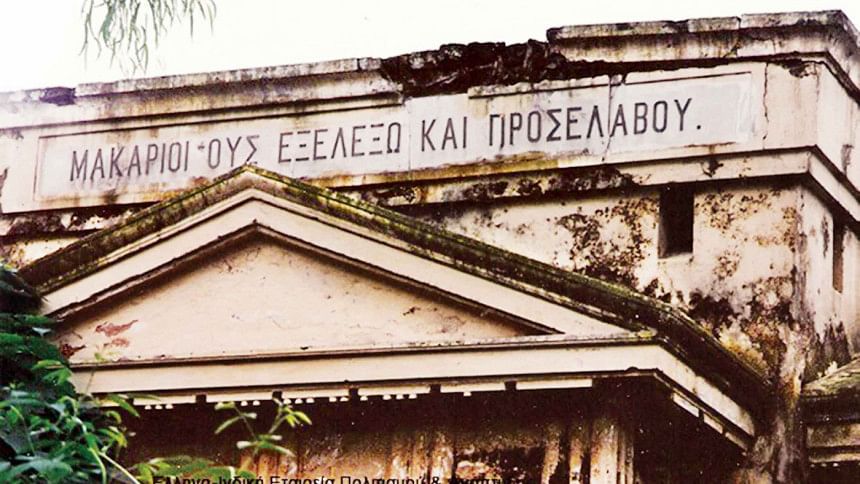
The Monument
A small yellow building that looks a little like a Greek temple faces the campus wall near the Teacher-Student Center of Dhaka University. It looks old and was in very bad state until the 1960s, when university authorities renovated it. A mysterious inscription is written on the frieze above the entrance to the building.
Many students and professors over the years have passed by this small building and wondered what the strange letters said. Those who peeped inside the usually locked gates and behind the furniture that is often stashed there, saw several plaques with inscriptions and wondered what they were. This article solves the mystery. It provides translations of the inscriptions and makes some inferences about the people commemorated there and their families.
The Inscriptions and Translations
On the frieze of the front entrance, facing the Nazrul Islam avenue, it is written in capital Greek letters:
"Happy are those whom you chose and took with you."
Without seeing the inscriptions inside, a reader of ancient Greek might think that the happy ones are the students admitted to the university! However, the inscription was carved long before students starting strolling casually by the little building. It refers to the nine gravestones which are embedded in the walls. Four are written in Greek, four in English, and one is in both languages. They belong to Greek families who lived in Dhaka 150-200 years ago.
Counterclockwise, the nine gravestones have the following inscriptions in Greek, English, or sometimes in both.
Gravestone 1 (bilingual inscription)
Here lies Sultana, wife of Alexander [son of] Kyriakos Philippou Politou (or Philippou from Istanbul); 1800; January 25 [by the Julian calendar]. Paid the common debt in Dacca. [Greek language]
Under this stone are deposited the mortal remains of Mrs. Sultana Alexander, who departed this life on Tuesday the 6th of February 1800; Aged 34 years. [English language]
Gravestone 2 (Greek)
Here lies the late Theodosia, wife of Theodore [son of] George Philippou Politou (or Philippou from Istanbul). 1805; April 10. Paid common debt in Dacca. May her memory be everlasting.
Gravestone 3 (English)
To the memory: Mrs. Magdalene and Sophia Jordan; also, to that of their husband, Mr. Joseph Jordan of Cesareah, Merchant at Narayangange. The latter departed this life the 10 of February 1819; Aged about 60 years. This monument is erected as a tribute of affection to their memory by their afflicted orphan children.
Gravestone 4 (English; the Urdu poem is in Latin characters, translation by the author)
To the memory of Nicholas Demetrius Elias, elder son of Demetrius Elias Esq. Died 5th March 1843; aged 46 years. His desired verse:
Dune_ka jomuza hain
The enjoyments of the world [after I die]hurgeze_ cumnu honga will never [emphatic] become less churcha ahe ruhaga there will be talk of sighs [my pain] ufsose humnu honga it is sad [emphatic] that I will not be there
Erected by his sincere friend, Basil Demetrius, in 1859
Gravestone 5: (Greek, ornate stone centrally located)
Here lies the late Jacob Essai Iakoboglous, from Caesarea; died 1819, June 22 and was 48 years old. The one who sees this stone from above, God, may he forgive him.
Gravestone 6 (English)
Sacred to the memory of Basil Demetrius, Clerk, St. Thomas Church. Born 5th Sept. 1800. He faithfully served as Commissariat Assistant IX [9] Years, Writing Master & Teacher in the Dacca College X [10] Years, Clerk in St. Thomas Church Dacca XL [40] Years.
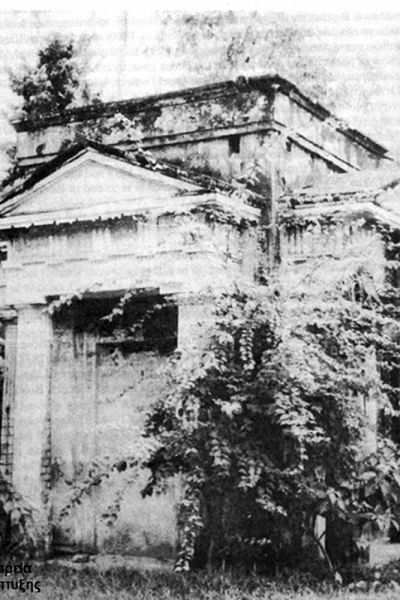
Blessed are the pure in heart for they shall see God
Matthew V.8 MDCCCLX [1860]
Gravestone 7 (Greek)
This is the grave of Father Nathaniel; holy and saintly, preaching about Jesus through word and life. Second appeared Thomas priest in the inimitable happy Dhaka. And at the same time, his fatherland was Sifnos [an Aegean island], where he saw the light in 1736. The [date in] which he died was 1810, March 12. Happy is the one who by paying homage respects.
Gravestone 8: (Greek)
The husband-loving woman who has not forgotten her husband's affection has erected this sign as an indication of her everlasting passion to her husband, Constantine [son of] George Mavrodoglou, whose home town was Istanbul and who spent his life as a merchant and was relieved [of his life] on July 24 1806. Dhaka.
Gravestone 9 (English)
Sacred to the memory of John Demetrius Ellias, second son of Demetrius Ellias Esquire, who was killed by a tiger whilst out shooting at Mirzapore 25 milles N.W. of Dacca on Sunday the 31st of January 1836. Aged 35 years.
Three noble brothers lie mouldering here named Nicholas, John and Constantinefamed as brave Hunters and to kindred dearwho erst to sport did their merry lives confine.
Erected by his cousin and godson, Manuel Ellias Mitchoo.
MURDOCH
Greek community in Dhaka
The existence of Greeks and Armenians in Dhaka is known from Dr. James Taylor who wrote in a book called "Topography of Dhaka" and referred to the immigrant communities. Greeks were late-comers to the Bangladesh area, after the Portuguese, Dutch, and Armenians. Alexis Argyris, the founder of the Greek community in Calcutta, died in Dhaka in 1777 and left considerable property, which was divided among his sons who took up their abode in Dhaka and Bakerganj. The Greek community apparently was small. According to Dr. Taylor, there were 40 Armenian and 12 Greek families in 1838. Like the Armenians, the Greeks were chiefly engaged in the inland trade, and there were a few who dealt extensively in salt at Narayanganj. Apparently, some achieved wealth, like the Elias family whose sons could afford to live a life of sports. The most prominent Greeks at the time Dr. Taylor wrote his book were the Ralli brothers, who had a jute factory at Narayanganj.
According to Dr. Taylor, the Greek church was built in 1821. Its name, St. Thomas, (one of the 12 disciples of Jesus who is presumed to have lived in India) refers to a saint commemorated much more by South Indians than by Greeks and may indicate a tribute to Indian Christians. Since the church was built in 1821, most university gravestones predated it. This means that maybe a smaller church existed previously or another church had been used for community events, such as a South Indian, Russian, or Armenian church. The priest attached to the church came from the ancient monastery of Mount Sinai in Egypt. A community center and a cemetery with about two bighas of land also existed in Maulvi bazaar, at and around Gulbadan house. The gravestones were dug up in recent years, and a high-rise building was built on the site in 1990, apparently illegally. It is reputed that some more gravestones are still to be found in the immediate vicinity of the cemetery.
The St. Thomas church was demolished in the severe 1897 earthquake. By then the area had become valuable property, and the colonial government took it over to build the Mitford medical school (now Salimullah Medical College). Taking over a church site was unusual and an indication that the Greek community had limited membership or wealth at the end of the 19th century. Interviews with knowledgeable people suggest that land was given elsewhere as compensation, at a site at or near the current fine arts building of the university. In the beginning of the century, Ramna had a garden and a cemetery, so taking the gravestones there may have been seen as appropriate. At about 1905, the British took over the Ramna land to build buildings for the East Bengal and Assam province. After several buildings were built, the province plan was annulled in 1911. The land given to the Greeks, therefore, was at a new city location rising in value as a result of British administrative activities. Reportedly, the Greek community owned other buildings in that area in the 20th century.
The little monument must have been built to house gravestones that were left exposed after the church was demolished. It is a rough imitation of a Greek temple (which the British would associate with Greeks) rather than a miniature byzantine church, which one would expect given the gravestones in it. It is not a family crypt, because most people listed on the stones appear unrelated to each other. One wonders why the gravestones and the bones that must have been underneath them were not interred in the cemetery that continued to exist until recent years. Perhaps those were the earliest burials or the gravestones were removed from the ground even before the church was destroyed. The good condition of the stones suggests that they were not exposed to the elements for long. They may have even been dug up to make room for the church in 1821 and some may have been stored in or around that church. Some examples of old embedded gravestones on walls of buildings do exist, as in the 9th century church of St. Lazarus in Larnaca, Cyprus.
Typical to the style of other foreigner burials (such as the Armenians) two English-language inscriptions say "Sacred to the memory of.." The Greek inscriptions are written with Byzantine letters that are ornate and rather difficult to read. The language of the gravestones is ancient (like classical Sanskrit) and similar to the language spoken 2000 years ago. It is likely that only the priests knew how to compose the inscriptions. (The inscription on the frieze, in particular, is part of a hymn known mainly by priests.) There are a few spelling and syntactical mistakes, but the complexity of the sentences shows that the writers were well versed in ancient Greek.
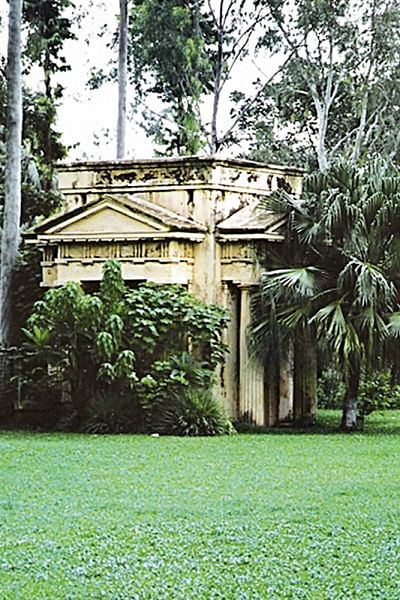
The quality of most letters suggests that there were engraved by persons who knew what they were writing, but some plaques (such as that of Iakoboglou) contain errors in letter design that suggest the opposite. Probably these gravestones were made elsewhere, such as Calcutta.
The inscriptions do not permit us to see what language these people spoke. Most were from Asia Minor, Istanbul and Caesarea (now called Kayseri, a city of 600,000 in the central Anatolia of Turkey), and one priest was from Sifnos, an Aegean island. Asia Minor Greeks spoke an archaic dialect, which has become nearly extinct after the removal of Greeks from Asia Minor in about 1927. Persons from Istanbul spoke a dialect that linguistically resembled Urdu, that is it contained many Turkish and Arabic nouns. Greeks from certain parts of Asia Minor had lost Greek altogether and spoke Turkish. In much of the Ottoman empire, teaching of Greek letters was forbidden and was done secretly by priests, who were the keepers of the written language. Ancient Greek inscriptions, therefore, served as a marker of Greek nationality for persons who could hardly understand them.
The People and Their Stories
What family relationships and stories do these gravestones tell? Below is what can be deduced without further research.
1) Philippou (possibly Philippou Politou). The names mentioned on the gravestones are: (a) Sultana, wife of Alexander, son of Kyriakos Philippou (nickname Alexandris) who was born in 1766 and died in 1800 at 34; (b) Theodosia, wife of Theodore son of George Philippou, who died in 1805. Since the two men do not have a common father's name, they sound like cousins, or perhaps an uncle and nephew. The word Politou may imply either that they were from Istanbul or possibly from Philippoupolis, a city now in Bulgaria.
2) Jordan (from Caesarea). Joseph Jordan was the husband of Magdalene and later Sophia. He was born in 1759 and died in 1819 when he was 60. Children from both wives are mentioned but not named.
3) Ellias (correct spelling should be Elias). The father, Demetrius, had at least three sons and one nephew: a) Nicholas, the eldest (born in 1797), who died at 43 in 1846; b) John, the second (born in 1801), who was killed by a tiger at 35 in 1836; c) Constantine, with no dates mentioned. The nephew was Manuel Ellias Mitchoo, godson and cousin of the three sons (dedicator).
The focal point of the three brothers' gravestone ("three brothers lie mouldering here..") is John Elias, who was killed by a tiger in 1836. However, the plaque includes Nicholas and Constantine, who appear to have died earlier. Manuel, John's godson, financed the plaque for his godfather's tragic death and seems to have reburied previously exhumed bones for the two other brothers.
4) Basil Demetrius. He was born in 1799 and died at 61 in 1860. The stone mentions no family.
Basil Demetrius was educated but apparently not rich. He was a commissariat assistant for nine years before he became an English teacher at Dhaka College for 10 years. If the engraving dates are correct, he was also a clerk at the St. Thomas church for 40 years.
5) Nathaniel and Thomas were two priests. Nathaniel seems like the assumed name of a celibate priest, and the fact that last names are not mentioned reinforces the impression that they were priest-monks. (Orthodox Christian priests may be married or single.) Perhaps Thomas was the priest from the Mount Sinai monastery mentioned in Dr. Taylor's book, and the Dhaka church may have been named at his honor.
6) Constantine Mavrodoglou had a wife (unnamed) but was not local; he was a merchant from Istanbul, who may not have had other relatives in the area. The affectionate dedication and lack of mention of children suggest that perhaps they had not been married for very long.
7) Jacob Essai Iakoboglou has the most ornamented, centrally located gravestone, indicating a man of some means who came to Dhaka and died middle-aged at 48. Aside from the priests, he is the only person with no relatives or connections mentioned.
Why did Greeks come to Dhaka?
Greeks have always been people of diaspora, and large numbers have lived throughout history outside the traditional Greek lands (which include Asia Minor). In this case, they were perhaps attracted by the relative freedom and human rights they enjoyed under the British in comparison with the Ottomans who conquered the Byzantine empire in 1453. One guesses a tendency to identify and merge with the British or other Europeans.
As mentioned earlier, most persons mentioned in the inscriptions anglicized their last names or used the easier fathers' names as last names. Therefore, we really do not know their exact last names. This makes it difficult to trace subsequent generations in Bangladesh or elsewhere and leaves them unaccounted for in history. What happened to the second generation of Greeks? Did they mainly merge with the locals and other foreigners or did they leave? There certainly was intermarriage with other foreigner communities, such as the Armenians and the British. Some until recently knew of Greek ancestors, such as the Lucas family (whose name may have also been a father's name turned to a family name). At any rate, the community did not live to see the independence of Bangladesh.
Greece became independent in 1827 and eventually became a homeland for Asia Minor Greeks who were expelled from Turkey around 1927. Political disturbances in the last 50 years encouraged even long-time resident families to migrate, leaving behind them property which local keepers later expropriated. Five Armenian families were still left in 1994, but no Greek family now lives in Bangladesh.
Faced with names and data of people who lived two hundred years ago, one wonders how those people viewed their past and present. Greece had not yet regained its independence; the mainland and Asia Minor had been under the Ottoman empire since 1453, and the Greek population lived with memories of the Byzantine past. (The two-headed eagle, the emblem of the Byzantine empire, appears on the central J.E. gravestone.) The 1757 British occupation of Bengal had only taken place 50 years before most of the Greeks died. In their lifetimes they must have watched the British consolidate their domination over Bengal, which still had a figurehead Nawab. What did they know about Bengali literature and culture? One expects that at least the second generation (such as the Elias family) spoke Bangla, but the only Indic linguistic reference is in Urdu. Greeks occasionally became literary figures in countries where they lived, but at the end of the 18th century Bengali literature was heavily Sanskritized and mainly comprehensible to people with Brahmanical education, which Greeks clearly did not seek. Most of the gravestone people lived and died before Rabindranath Tagore and Vidyasagar made Bangla accessible to the more common people, comprehensible, and interesting.
The stories of these people are fading fast, though documents may still be found in Calcutta, Dhaka, or Greece regarding their acts. If more were known, their lives would be better understood. Perhaps someday a doctoral student will research the archives and write a dissertation on the Greek community. But whether or not any more is ever known, the university has in its grounds an interesting memorial of people who came, learned, and apparently found Dhaka a good place to live.
Helen Abadzi is a Greek psychologist.
This is an abridged version of the article titled "Glimpses of the Greek Community from the Dhaka University Gravestones" which was published in www.elinepa.org on December 31, 2005.

 For all latest news, follow The Daily Star's Google News channel.
For all latest news, follow The Daily Star's Google News channel. 

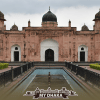
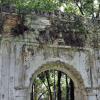
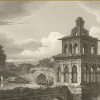
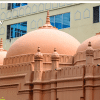



Comments